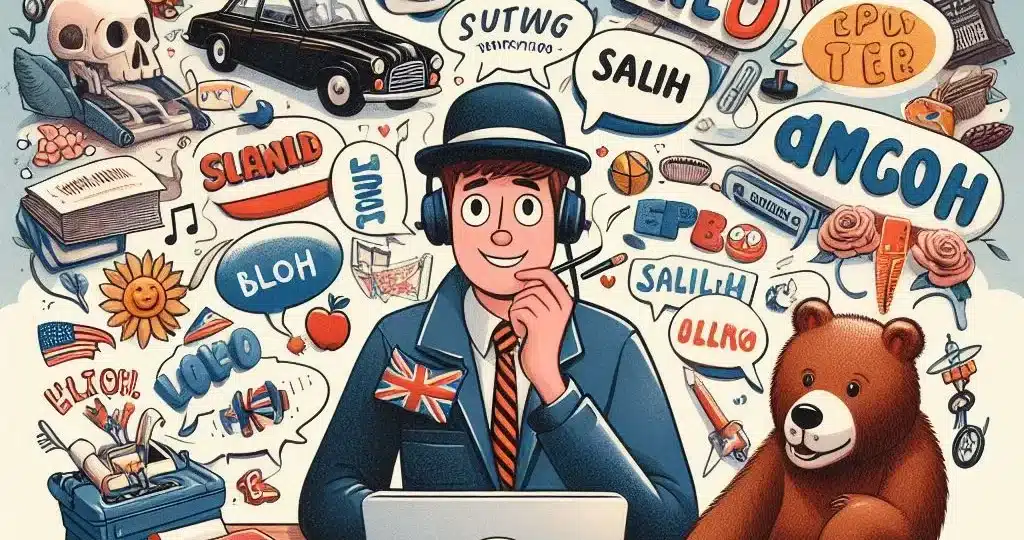Idioms and slang
Introduction
Idioms and slang are an essential part of language and communication. They add color, depth, and nuance to our conversations, allowing us to express ideas and emotions in creative and succinct ways. Idioms and slang are not just linguistic curiosities; they are integral to the fabric of a language and the culture it represents. In this essay, we will explore the significance of idioms and slang, their origins, functions, and impact on communication, as well as the challenges they pose for language learners.
Section 1: Understanding Idioms
Idioms are expressions that convey a figurative meaning different from the literal interpretation of the words used. They are deeply rooted in the cultural and historical context of a language, reflecting the values, beliefs, and experiences of a community. Idioms often derive from historical events, folklore, literature, and social customs, and they serve as a window into the collective mindset of a group of people. For example, the English idiom “raining cats and dogs” has no literal connection to felines or canines falling from the sky, but it vividly communicates the idea of heavy rain.
Section 2: The Function of Idioms
Idioms serve various functions in language. They can be used to add emphasis, humor, or emotional resonance to a conversation. Idioms also facilitate efficient communication by encapsulating complex ideas in a few words. Furthermore, they create a sense of belonging and shared identity among speakers of a language, as the understanding and use of idiomatic expressions require a degree of cultural and linguistic fluency. In this way, idioms contribute to the richness and diversity of a language, reflecting the collective wisdom and creativity of its speakers.
Section 3: The Role of Slang
Slang, on the other hand, encompasses informal words and expressions that are commonly used in specific social groups or subcultures. It often emerges as a form of rebellion or as a means of establishing group identity. Slang evolves rapidly, reflecting the changing attitudes, values, and experiences of its speakers. It can also be a way of excluding outsiders or asserting insider status. For example, the use of slang terms such as “lit” or “on fleek” among young people signals their membership in a particular social group and their awareness of current trends.
Section 4: The Impact of Idioms and Slang on Communication
While idioms and slang enrich language, they can also pose challenges for communication, especially for non-native speakers. Idioms, in particular, may be confusing or opaque to those who are not familiar with the cultural context from which they arise. Slang, with its ever-changing nature and diverse variations, can also present obstacles to understanding and integration for language learners. Moreover, the overuse or misuse of idioms and slang can lead to miscommunication or unintended offense, as not all expressions are universally understood or accepted.

Section 5: The Origins and Evolution of Idioms and Slang
The origins of idioms and slang are often shrouded in mystery, as they frequently emerge organically from the daily interactions and experiences of a community. Over time, idioms and slang may undergo semantic shifts, acquiring new meanings or falling out of use as societal norms change. The study of etymology and historical linguistics provides valuable insights into the evolution of idiomatic expressions and slang terms, shedding light on the cultural, social, and psychological forces that shape language.
Section 6: Idioms and Slang in the Digital Age
The digital age has brought about new avenues for the creation and dissemination of idioms and slang. Social media, online forums, and instant messaging platforms have accelerated the spread of linguistic innovations, leading to the rapid adoption of new idiomatic expressions and slang terms. Memes, viral videos, and internet phenomena have also contributed to the emergence of digital idioms and slang, further blurring the lines between online and offline communication. The digital landscape presents both opportunities and challenges for the study and understanding of idiomatic language.
Section 7: Idioms and Slang in Cross-Cultural Communication
In a globalized world, the exchange of idioms and slang across cultures has become increasingly common. As individuals interact with speakers of different languages and cultural backgrounds, idiomatic expressions and slang terms are often borrowed, adapted, or translated to bridge linguistic and cultural gaps. This cross-pollination of idioms and slang enriches intercultural communication, fostering mutual understanding and appreciation for diverse linguistic practices. However, it also requires sensitivity and awareness of cultural differences to avoid misinterpretation or offense.
Section 8: Teaching and Learning Idioms and Slang
For language learners, mastering idioms and slang presents a unique set of challenges. Traditional language education often focuses on formal vocabulary and grammar, neglecting the rich tapestry of idiomatic language. Educators and curriculum designers are increasingly recognizing the importance of incorporating idioms and slang into language instruction to equip learners with the tools for authentic communication. Teaching idioms and slang in context, providing cultural explanations, and encouraging active usage can enhance learners’ proficiency and cultural competence.
Conclusion
In conclusion, idioms and slang are integral components of language and culture, shaping the way we communicate and express ourselves. They reflect the collective experiences, values, and creativity of a community, while also posing challenges for language learners and cross-cultural communication. The study of idioms and slang offers valuable insights into the dynamic nature of language and the complex interplay between language and society. As language continues to evolve in response to social, technological, and cultural changes, idioms and slang will undoubtedly remain vibrant and essential aspects of human communication.






